Eating in the Extreme
11-12-2017
Category: Life in Antarctica
“An army marches on it’s stomach” the famous quote attributed to Napoleon Bonaparte resonates well beyond the military. Nobody functions well when they are hungry, but this is particularly so when exposed to the unforgiving conditions of Antarctica which our field team work in. The food can truly make or break an expedition. And feeding our small ‘army’ of a field team is far from an easy challenge!

The 2016-17 field team enjoying one of Karin’s delicious meals at Wasa Station. Photo Credit: Carl Lundberg
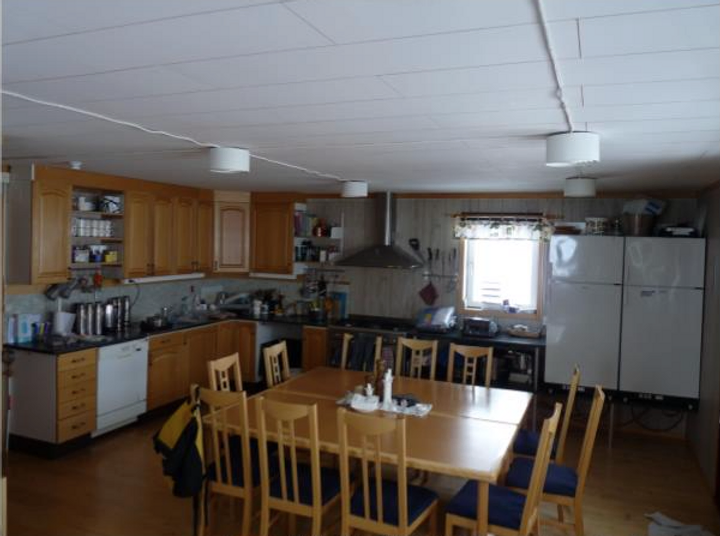
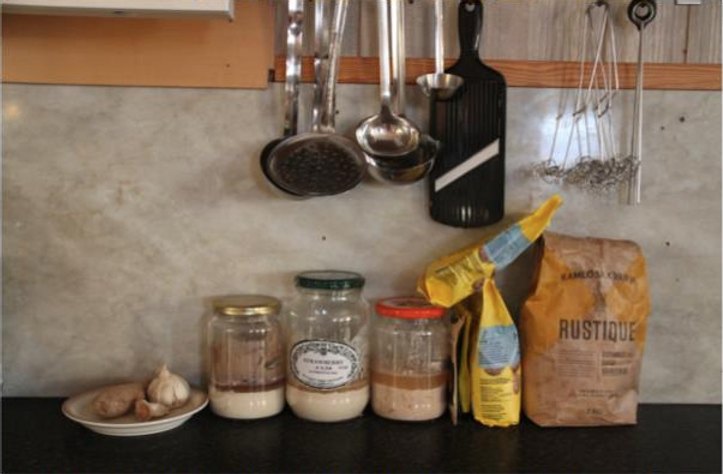
The kitchen at Wasa. Pretty much your standard kitchen, just in Antarctica. Photo Credit: Jennifer Newall (top), Carl Lundberg (bottom)
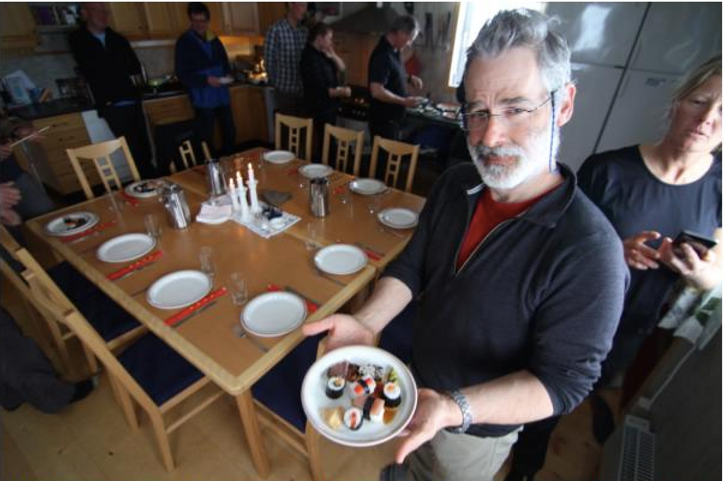
Don’t think any of the team expected to be treated to sushi while working in Antarctica! But with the fully equipped kitchen at Wasa and ability to store many ingredients, even sushi was possible! Photo Credit: Carl Lundberg
Last season the team had the luxuries of a fully equipped kitchen at Wasa station, and our wonderful chef Karin (you can read her blog from last year about feeding the team). Karin provided the team with 3 delicious meals per day meaning there was never a ‘hangry’ member of the team. The upcoming field season will be very different. For a start they won’t have our base as Wasa, so no fully equipped kitchen. Nor do will they have a dedicated chef. This doesn’t mean they’ll be a ‘hangry’ team however! In this blog Jenny discusses the considerations which go into planning the food for the upcoming field season. And in part 2 she shares of her overnight trip into the Scottish mountains to test some homemade ‘boil in a bag’ recipes.
Before joining the MAGIC-DML team I had been a member on various Arctic and mountaineering based expeditions. On all of these the food set-up was pretty much the same: dehydrated ration packs for breakfast and dinner, lunch as well if you were (un)lucky. And lots of high energy snacks throughout the day.
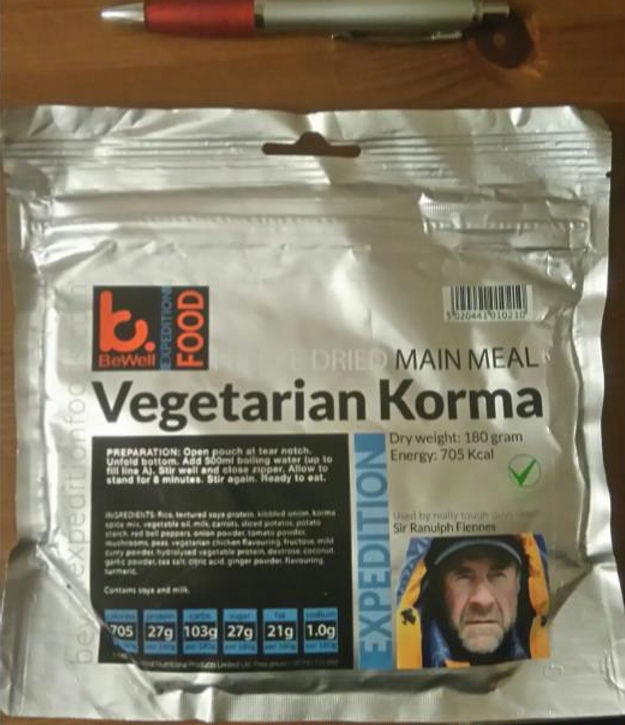
Example of a ‘ration pack’ meal. Small, and lightweight packing as many calories as possible. Photo: Jennifer Newall

A scrambled eggs and cheese ‘ration-pack’ breakfast meal. To prepare these freeze dried meals you simply add water to the indicated line inside the pack, mix well and wait about 5-10 mins (depending on the meal) for it to be ready to eat. Photo: Jennifer Newall
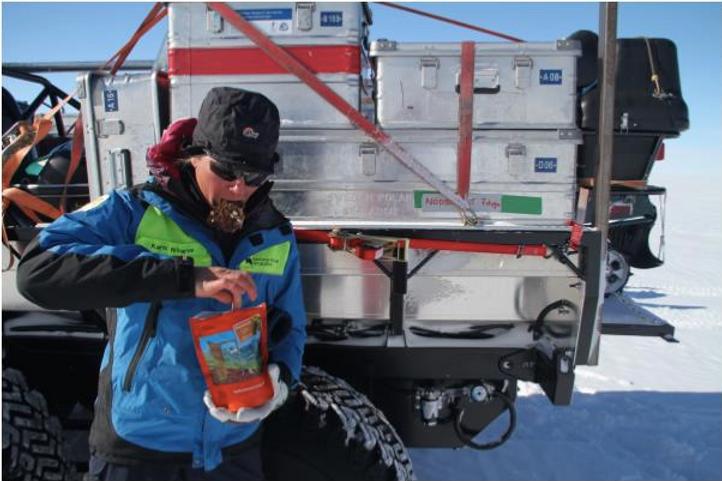
Karin preparing a ‘ration-pack’ lunch during fieldwork last season. Photo: Carl Lundberg
These meals are not the most inspiring. In fact, to begin with most people dislike them. It’s only after being in the wilderness, away from home, for at least a week, exerting yourself daily that suddenly these ration pack dinners are delicious! Because of course, when you are hungry everything tastes better! Most of the time on remote expeditions such as these we only have a basic camping stove so it is difficult to be creative with the meals. I had thought this was just one of the sacrifices that must be made when working in remote areas. But last season proved me wrong. With Karin’s wonderful culinary skills we ate like kings for the entire duration of the fieldwork, even when we were away from the station in the ‘deep field’ with only our tents Karin had prepared us delicious food to heat up each meal. To me it was revolutionary that you could eat well on expedition. And I certainly learnt that the extra bit of effort which goes into preparing and planning the food such as Karin did is well worthwhile.
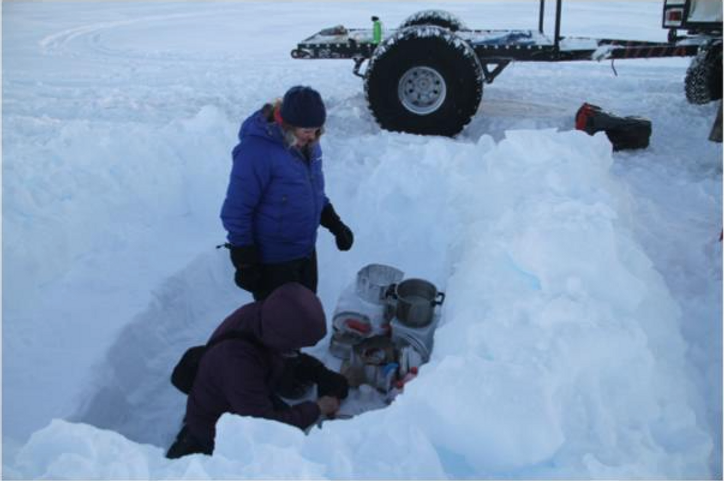
Karin and Jenny in the kitchen we built at one of the field camps. When away from the station we are cooking on basic camping stoves. Photo Carl Lundberg

A typical camping stove. We use these to cook our food when working away from the station. Photo: Primus
So what actually goes into planning the food for a field season?
Well, this list is just a few of the things which needs to be taken into consideration when planning the food:
- High calorie intake to account for constant activity and simply keeping warm. But its not just the number of calories that matter. Nutritional value is key and is achieved through planning a balanced diet.
- The transportation and preservation of the food. Apart from penguins and seals there is no natural food source on the Antarctic continent. Therefore anything we have to eat needs to be planned for and transported into the field well in advance.
- Limited cooking facilities. We don’t have fully equipped kitchens, simply a single stove in each 2-person living module and minimal pots and pans. Not to mention washing dishes in can be painfully cold! Which is why ‘boil in the bag’ style dishes are ideal.
- Tasty and satisfying meals. Because good food means good morale.
- Catering for dietary requirements. A diverse team often has diverse needs, and this team is not exception. And I am the key culprit here being vegetarian with a gluten intolerance.
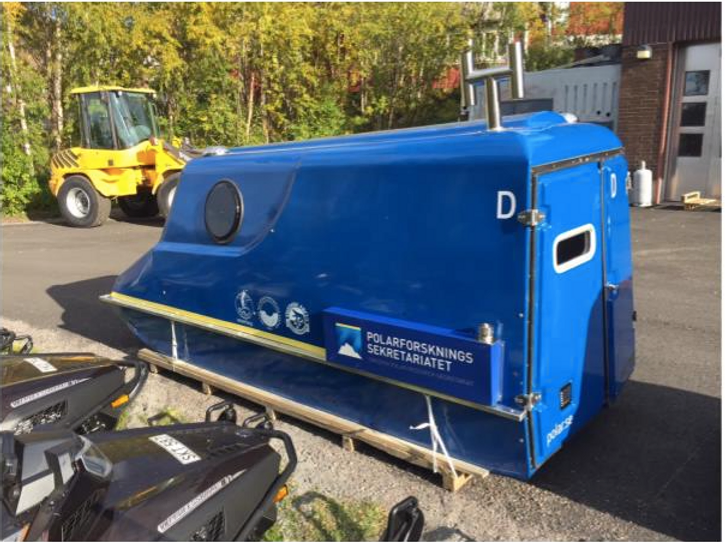
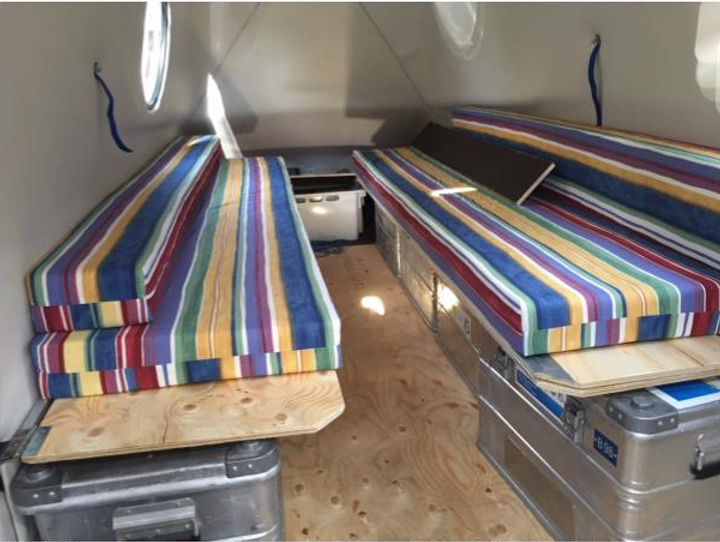
Photo: Håkan Grudd.
This field season we are working too far from the Wasa station for it to be used as a base. We will have access to the South African station – Sanae, but we will only be there for short visits. The rest of the time we will living out of these living modules which will be pulled behind the snow mobiles. These are pretty small, and certainly don’t have a fully equipped kitchen.
Given these factors to consider, the meals have been planned as such: Breakfast – porridge (oatmeal) with various options of dried fruit, nuts and seeds as to be able to mix it up day to day.
Lunch – dehydrated freeze-dried meal packs. We will have flasks of boiled water to add to the pack at lunch time and it is as simple as that.
Dinner – pre-prepared ‘boil in the bag’ style meals that will be cooked with pasta, rice etc.
However, this season my dietary requirements (vegetarian AND gluten free) proved to be a bit of a logistical headache. The providers of the ‘boil in a bag’ dinners were not able to cater to this. After some consideration of options it was decided that we will make my dinners ourselves and keep them frozen as they are shipped in to the field. And so over the past week or so I have been testing recipes, primarily their ‘freezability’ and ease of reheating. However, I’ll talk about this in part 2.
Fun food fact to end this blog post… Brain cells consume double the amount of energy than any other cells in the body. We certainly need to keep our brains well fed!
#FieldWork #LifeintheArctic #WasaStation